Bird lovers rejoice! You don’t have to wait until summer to spend your days or evenings bird watching. Plenty of beautiful (and fascinating) birds make their home in Arizona and remain in the winter. Here are 9 birds that spend their winters in Arizona. Happy birding!
1. Common Poorwill
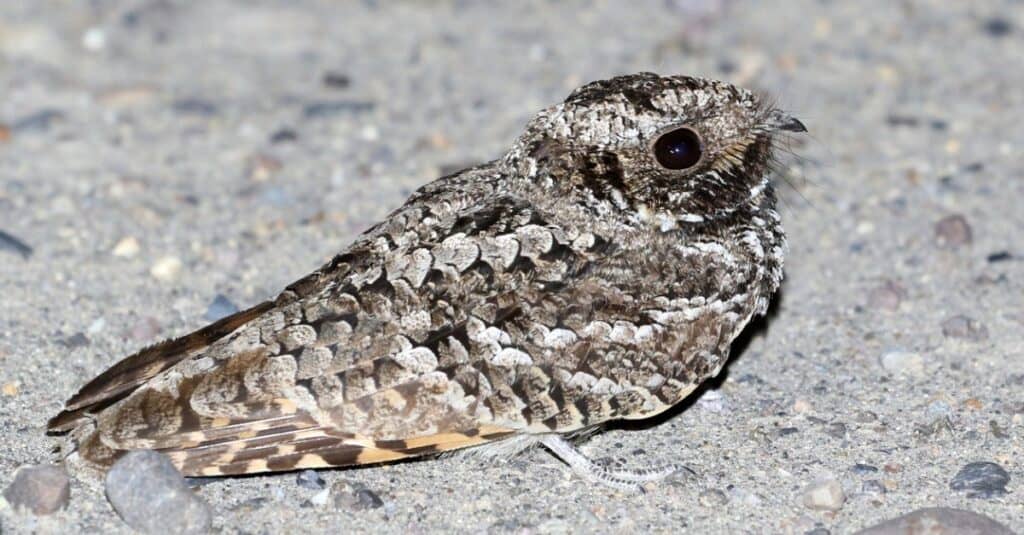
Common Poorwills hibernate in the winter.
©Randy Bjorklund/Shutterstock.com
The Common Poorwill (Phalaenoptilus nuttallii) loves the dry terrain of the Sonoran desert in Arizona. It’s a member of the Nightjars family and is known for surprising unsuspecting nighttime drivers. These birds love hanging out in the middle of roadways at night, where only their glowing eyes give away their position. They also hibernate and are the first birds known to do so.
Since they’re largely nocturnal, Common Poorwills feed primarily on insects active at night. They will feed while sitting still on the ground or a short perch. Sometimes, they’ll jump up to catch insects flying by. These birds don’t build a nest. Instead, they make their bed wherever they are — on the ground or in dead branches.
Scientists aren’t sure about the migration habits of Common Poorwills. However, it looks like populations in Arizona remain throughout the winter.
2. Curve-billed Thrasher
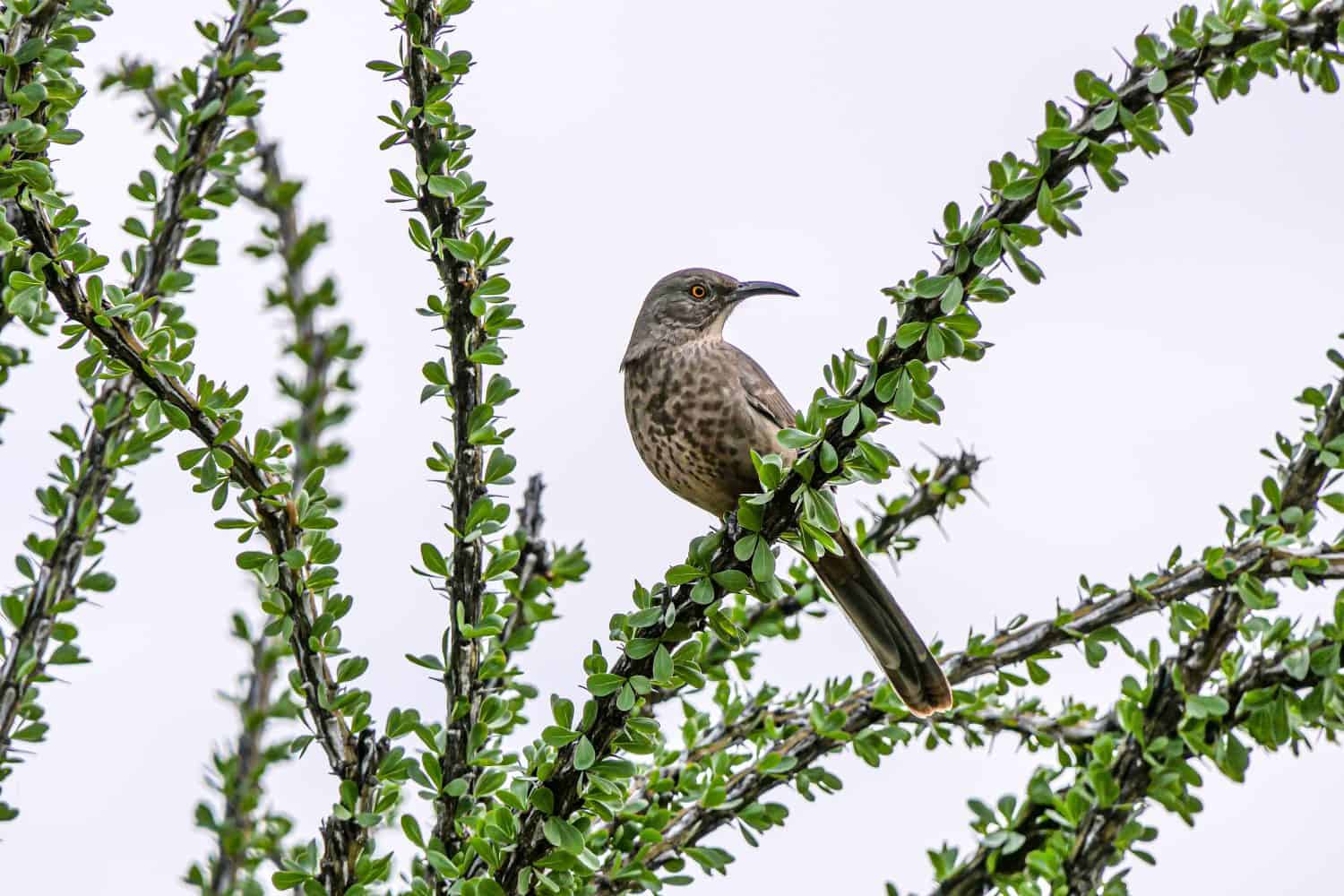
Curve-billed Thrashers make their home in the Sonoran desert.
©Wirestock Creators/Shutterstock.com
The most common Thrasher in the southwest is the Curve-billed Thrasher (Toxostoma curvirostre). This desert-dweller is a member of the Mockingbirds and Thrashers family. It thrives in the Sonoran desert lowlands. This fast bird doesn’t mind populated areas, loves mesquite and cholla cactus, and loudly announces its presence.
Curve-billed Thrashers spend most of their feeding time on the ground, rooting through the soil for their preferred food, insects. However, they also love feasting on the fruit of saguaro and prickly pear cacti. They build their nests on shrubs or cacti several feet above the ground.
They spend most of their time in the southwest and don’t tend to migrate further south.
3. Gila Woodpecker
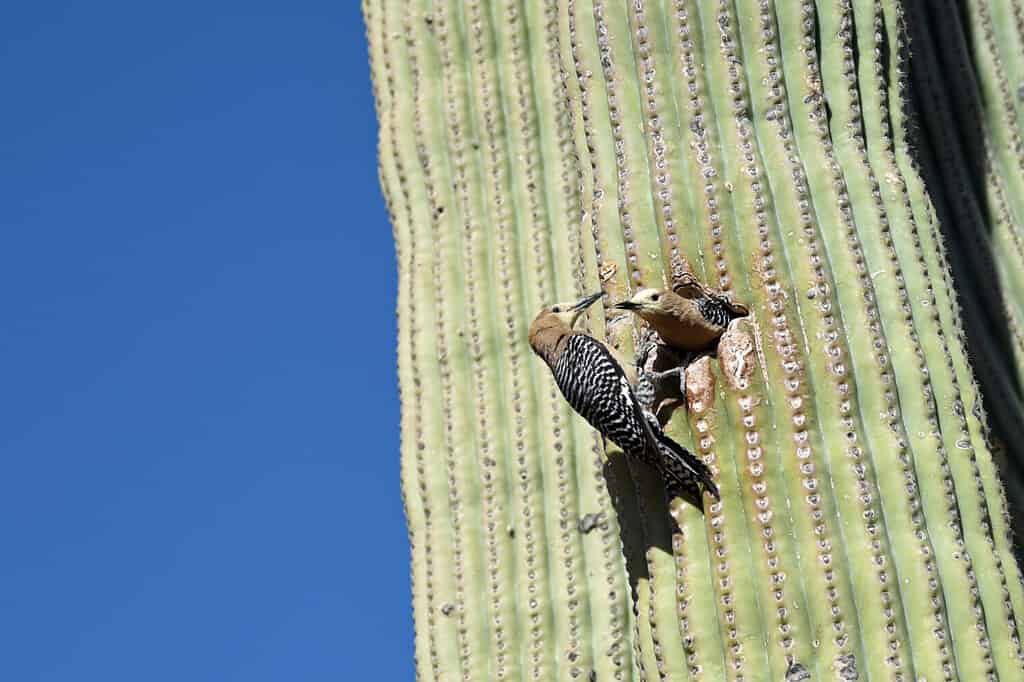
©dba duplessis/Shutterstock.com
The Gila woodpecker (Melanerpes uropygialis) is extremely abundant in Arizona. It belongs to the woodpecker family, as the name implies. It is loud and commonly seen on the impressive saguaro cacti. However, it also loves to spend time on other plants and trees. Additionally, this unique bird enjoys spending time in more populated areas.
This species is omnivorous and doesn’t mind stealing the sugar water from hummingbird species. But they primarily forage for insects in trees, cacti, and along the ground. It’s been known to eat berries, fruit from cacti, seeds, and the occasional baby bird from other species.
They burrow holes in cacti and large trees for nesting. And Gila woodpeckers rarely migrate during the winter. When they do, they don’t go far.
4. Gilded Flicker

Gilded Flickers love hanging out on cacti in the Sonora Desert.
©G Parekh/iStock via Getty Images
The gilded flicker (Colaptes chrysoides) is another bird endemic to Arizona. It is a member of the woodpecker family and spends most of its time in nests in saguaro cacti. But this bird also frequents cottonwood trees near water. Unlike the Gila woodpecker, gilded flickers tend to nest in dead wood instead of live trees.
It is slightly smaller than its relatives and typically prefers a hotter climate. However, in parts of Arizona, its territory overlaps with that of the Red-shafted flicker.
Watching gilded flickers forage is a joy. They seek insects on trees, cacti, on the ground, and darting into the air to catch them mid-flight. These birds love eating ants. They also enjoy nuts, fruit, seeds, and a variety of larger insects.
Gilded flickers don’t migrate out of the Sonoran desert during the winter. They enjoy the heat.
5. Greater Roadrunner
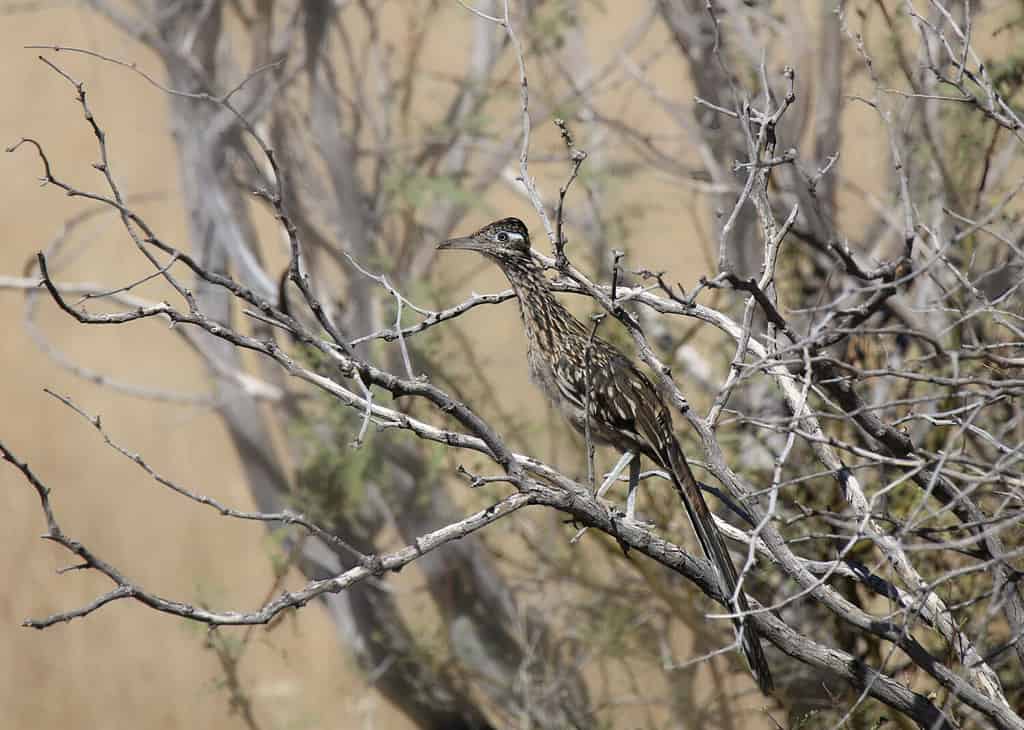
These birds earned their spot in folklore (and Hollywood) thanks to their habit of running rather than flying.
©vagabond54/Shutterstock.com
Every cartoon fan is familiar with the Greater Roadrunner (Geococcyx californianus). This fast bird belongs to the Cuckoos, Roadrunners, and Anis family. Its favorite home is among the brush in the Sonoran desert. Greater Roadrunners earned their spot in folklore (and Hollywood) thanks to their habit of running rather than flying. These speedy birds can hit around 15mph.
What most people don’t know is that these birds will eat almost anything. The most unsurprising items on their menu include fruit, seeds, nuts, and insects. But they also love to eat baby quail, snakes, rodents, birds, scorpions, lizards, tarantulas, squirrels, snails, and centipedes. They usually hunt while walking but aren’t shy about jumping into the air to catch hummingbirds mid-flight.
Greater Roadrunners are happy spending their winters in Arizona and don’t migrate elsewhere.
6. Mourning Dove
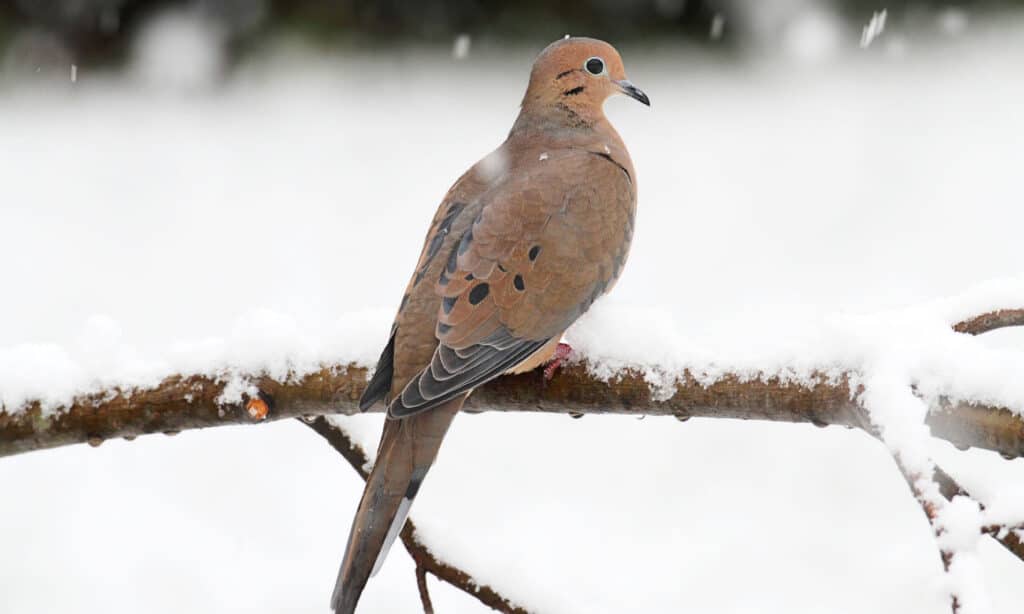
Mourning doves are a very common bird throughout the United States.
©iStock.com/SteveByland
Have you ever heard a bird sing and wondered what the lovely sound was? There is a strong possibility it was a Mourning Dove (Zenaida macroura), one of the most common birds in North America (including Arizona). These beautiful birds are in the Pigeons and Doves family. They love frequenting open spaces and avoid dense forests.
Mourning doves are picky about their food, eating a seed-based diet almost exclusively. On occasion, they may eat a snail or two. But, unlike many birds, they tend to avoid insects most of the time.
The breeding grounds for Mourning Doves are further north. Those populations will migrate south in the fall, spending the winter in warmer areas. However, there is a year-round population that hangs out in Arizona.
7. Northern Flicker
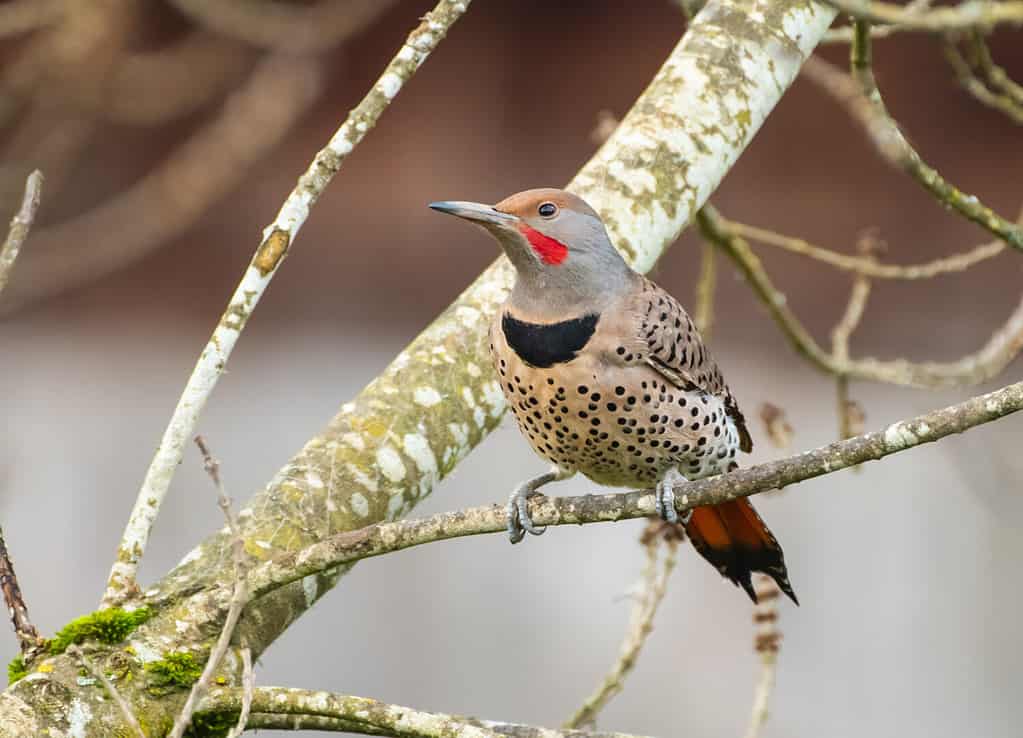
When they lift their wings, Northern flickers show off their bright coloring.
©Jennifer Bosvert/Shutterstock.com
Northern flickers (Colaptes auratus) are part of the woodpecker family and come in two distinct types — Red-shafted and Yellow-shafted. They are a stunning sight to behold. On the outside, these birds are a standard brown. However, when they lift their wings, Northern flickers show off their bright coloring. In Arizona, you will find the Red-shafted flickers but not Yellow-shafted. The former lives in the northern part of the state.
These birds eat a diet that consists primarily of insects, ants, nuts, fruits, and seeds. But there are documented occurrences of them snatching young bats. They nest in dead wood and prefer cottonwood, pine, and willow.
Red-shafted Northern Flickers don’t migrate too far in the winter. Those already in Arizona may move further south or to lowland regions.
8. Turkey Vulture

Turkey vultures use their sense of smell to find carrion.
©Attis, Public domain, via Wikimedia Commons – License
Turkey vultures (Cathartes aura) live throughout much of the United States, including all of Arizona. They are members of the New World Vultures family and prefer living in open areas, including deserts and slightly wooded regions. These birds stand apart in the bird world for their phenomenal sense of smell. They regularly seek out their prey by scent alone.
Their primary food source is carrion, particularly fresh. However, Turkey Vultures will also feed on live fish and insects occasionally. They don’t technically nest since they focus on finding a safe spot in any number of areas. These birds will make a home in old buildings, hollowed-out wood, in caves, or tucked into cliff crevices.
Most Turkish vultures don’t migrate unless they live farther north. Those birds tend to head farther south. However, the populations living in Arizona stay put during the winter.
9. Western Meadowlark
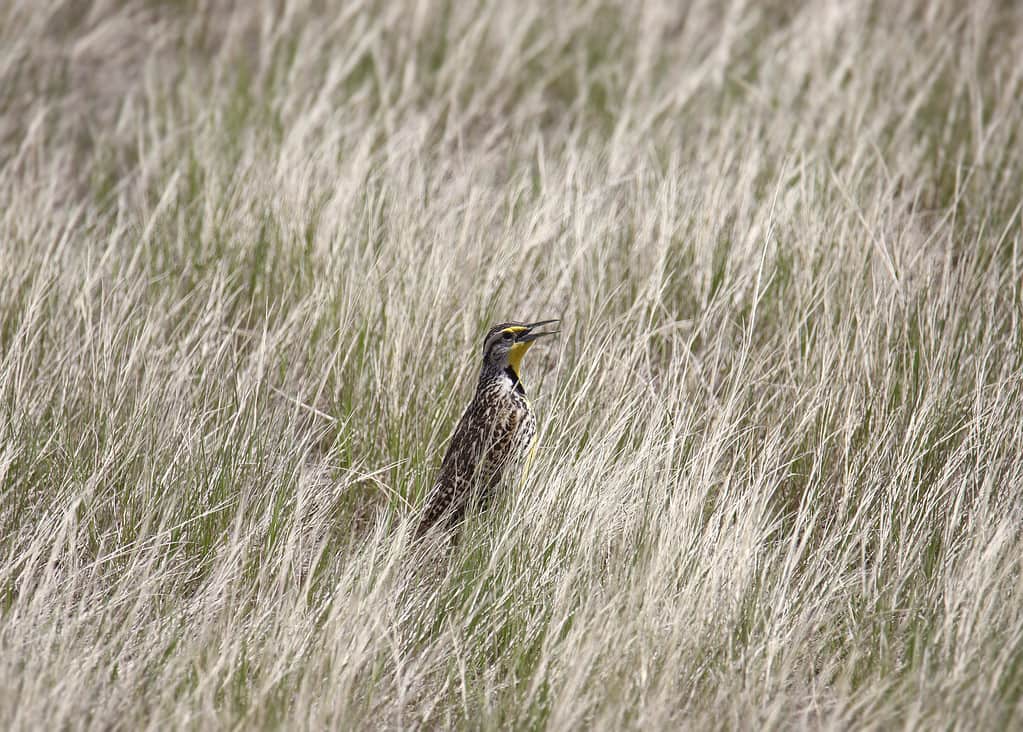
Western Meadowlarks enjoy spending time in tall grasses, which is also where they typically build their nests.
©Nancy Strohm/iStock via Getty Images
These lovely birds live throughout much of North America, to the delight of all who see them. Western Meadowlarks (Sturnella neglecta) belong to the Blackbirds and Orioles family. They love open spaces like grasslands. Their coloring is similar to that of the Eastern Meadowlark, but their call is distinctly different, and they don’t share territory with their relatives.
These birds love looking for insects and seeds in low-lying plants or along the ground. They will also occasionally peck into the soil, looking for treats. Females built doomed nests on the ground, typically hidden by grasses.
Western Meadowlarks do migrate in the winter. However, those already living in parts of Arizona don’t tend to travel out of the state.
Summary of 9 Birds That Spend Their Winters in Arizona
| Number | Bird |
|---|---|
| 1 | Common Poorwill |
| 2 | Curve-billed Thrasher |
| 3 | Gila Woodpecker |
| 4 | Gilded Flicker |
| 5 | Greater Roadrunner |
| 6 | Mourning Dove |
| 7 | Northern Flicker |
| 8 | Turkey Vulture |
| 9 | Western Meadowlark |
The photo featured at the top of this post is © Dennis W Donohue/Shutterstock.com
Thank you for reading! Have some feedback for us? Contact the AZ Animals editorial team.






